vertere eye concentrate reviews
Disclosure of Material Connection : Products shown in the section titled ‘Our Top Choice’ are those that we promote as the owner and/ or reseller and does not represent all products currently on the market or companies manufacturing such products. This information is disclosed in accordance with the Federal Trade Commission’s 16 CFR, Part 255 “Guides Concerning the Use of Endorsements and Testimonials”. We would like to make it clear that any and all links featured in this section are sales links; whenever a purchase is made via one of these links, we will receive compensation.
We, Health Web Magazine, the owner of this e-commerce website, fully intends to comply with the rules of the Federal Trade Commission (FTC) regarding the use of endorsements, testimonials, and general advertising and marketing content. As a visitor to Health Web Magazine you should be aware that we may receive a fee for any products or services sold through this site.
Content
This content may contain all or some of the following – product information, overviews, product specifications, and buying guides. All content is presented as a nominative product overview and registered trademarks, trademarks, and service-marks that appear on Health Web Magazine belong solely to their respective owners. If you see any content that you deem to be factually inaccurate, we ask that you contact us so we can remedy the situation. By doing so, we can continue to provide information that our readers can rely on for truth and accuracy.
Our Top Selections Box – Promotional Sales
Products shown in the section titled ‘Our Top Products’ are those that we promote as the owner and/ or reseller and does not represent all products currently on the market or companies manufacturing such products. In order to comply fully with FTC guidelines, we would like to make it clear that any and all links featured in this section are sales links; whenever a purchase is made via one of these links we will receive compensation. Health Web Magazine is an independently owned website and all opinions expressed on the site are our own or those of our contributors. Regardless of product sponsor relations, all editorial content found on our site is written and presented without bias or prejudice.
Something we believe is that every page on the website should be created for a purpose. Our Quality Page Score is therefore a measurement of how well a page achieves that purpose. A page’s quality score is not an absolute score however, but rather a score relative to other pages on the website that have a similar purpose. It has nothing to do with any product ratings or rankings. It’s our internal auditing tool to measure the quality of the on the page content. There are a number of factors that determine the Page Score of a given page. Landing page quality is a factor in determining Page Score. Landing page quality generally refers to whether or not the overall page contains relevant and original content to the web page visitor. The content quality value of a web page is determined by comparing a page to known quality patterns and each pattern carries a different weighting in how it affects the overall content quality value of a page. We also factor in user generated feedback on this form plus a page quality algorithm. Since web pages content can change, the content quality value of a web page is updated periodically.
Restore your hair’s luster, shine and body using these shampoos and conditioners. These products all feature vitamin-rich formulas that are overflowing with vitamins A, C and E to help the hair produce a healthy level of hydration that encourages all-over shine and volume. Epicuren shampoo and conditioner has no chemicals, fragrances, colorants or alcohols.
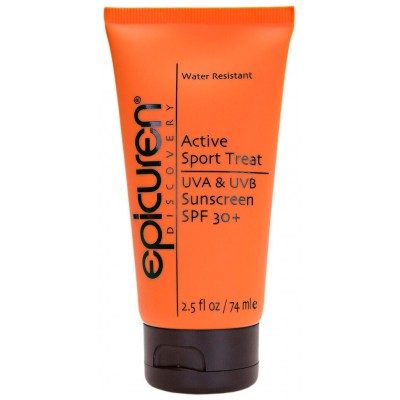
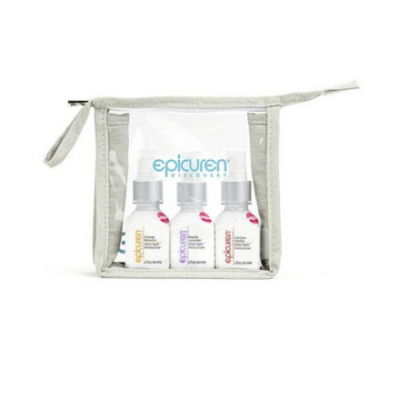
Black Swan – $1,500 austinaudioworks.com
Vertere eye concentrate reviews
Looking for a new phono preamp
Long time lurker, first time poster.
Here’s the deal. I’d like to find a new phono preamp. I’d prefer solid state, tubes get noisy too fast. My latest cartridge is an AT-ART9XA. I’m currently running thru a sut into a cj pv10a with phono stage, but I have just got my hands on a Bel Canto pre5 that the new phono pre will be paired with.
I’ve got a hard upper limit of $2.5k, less is OK for the right unit. I’m looking to buy new. Dealers around me aren’t really set up to demo vinyl, so I’m hoping the collective experience in here can at least point me in the right direction. Hopefully, it would have a one month return policy so I can try out the preamp.
- 1
- 2
- Next ›
- Last »
gestalt
The Gold Note PH-10 with the matching PSU-10 power supply is lovely in that budget class.
Industry disclosure: I’m a dealer.
djspinner
No direct experience, but at that price range I’ve only heard great things about the Sutherland 20/20 and the PS Audio Stellar.
ecotower603
Have a look at this !
psychoticreaction OP
The Gold Note looks interesting, I like the balanced outputs. Also the sutherland 20/20. I will also have a close look at the PS Audio.
I don’t see many mainstream reviews for the RCM. Also, it’s over my budget, and is essentially a used item with no original box.
mijostyn
jjss49
i run an art 9 (among other lomc’s), feel same way as you that i prefer ss phono stage for low noise, drive and linearity, and i put tubes downstream in the chain to get that goodness
for ss phono stages, i have been through 10-12 in my time, my favorites are the ayre p5xe, and the upper lehmann audio units. great great sound for (fairly) reasonable $
tried chord huei, musical surroundings, sutherlands, tom evans, rega, ps audio among others. kept the ayre and lehmann
psychoticreaction OP
I would not want to buy a phono stage that severely limits the cartridges I could use with it in the way your suggestion would. For me, the Channel D Lino C 2.0 would be a total waste of my time and my money.
rsf507
chakster
audition__audio
psychoticreaction OP
Most humans have a need to justify the money they spend by telling themselves and others that what they got in return was not only the best for them, but for everyone else too.
It,’s a modern version of The Emperor’s New Clothes.
hudsonhawk
bpoletti
With a low output cartridge, solid state phono stages can get noisier than tubes, than hybrids. It has to do with how the current crop of semiconductors are manufactured.
Under any circumstances, I would recommend a Herron VTPH-2A. It is dead quiet. With a little luck, you could find one used that meet your budget. I’ve had one for years without ANY noise from tubes or the SS front end.
ericsch
lexx21
aewarren
realworldaudio
I’d recommend the new Hagerman Trumpet. It has a utilitarian look, but the content is worth gold. Jim improved the sound on the old Trumpet (Stereophile Class A), this is the 3rd generation version, and decreased the price a LOT at the same time. It is a 10K category tube phono with MC step up (solid state) for 1.1K$.
Don’t let the meager price tag scare you away. It is a giant step up over the CJ.
Trumpet is a fantastic match for lomc Audio Technica cartridges.
alucard19
fuzztone
hifiman5
mijostyn
dodgealum
vinylshadow
pbnaudio
Google the B2B-1 for more info – there is countless great reviews of it.
speakermaster
cfarrow
woodhart
audioguy85
barryaudiophile
Black Swan – $1,500 austinaudioworks.com
bikerbw
lawmnsuu
How do you like your D’Agostino ? Did you compare it to other integrateds or separates before getting it ?
$2.5k new phono stage is tough. I don’t know what I would choose without trying out at least a dozen. I mean, receiving and shipping boxes for a month or two on a regular basis.
You have to listen to them for yourself.
jay73
The only phono that I have any experience with so far is the Sim Audio Moon 110lp V2, which is in my system and been doing me well so far over a year.
And so I would recommend the big brother, 310lp.
I have read good reviews.
Never had any issues or noise from my phono and so I would imagine the 310lp would be much better.
jrw1971
clearthinker
@mijostyn Dogmatic as ever. Now you can choose phono amps without listening. Worse you advise others on that basis. No worry, they are sure to see through you.
As to airplanes, lucky you weren’t on the two Boeing 737 Maxes that crashed, killing all their passengers. Modern designs are very complicated and not always clever. They were brought down by idiot software programmers. Give me the DC4 with pilots any day if I want to stay alive. Worse, Boeing would have carried on flying them if governments hadn’t stopped them. No doubt Boeing thought they were better because they were modern. Ho hum.
jw944ts
psychoticreaction OP
Thanks everyone for the responses. I am looking into all your suggestions.
As for the life of tubes, I listen to the system roughly 10 hours a day, a bit less on weekends. My listening room doubles as an office, and I work from home almost exclusively. This puts over 2000 hours a year on the tubes. I have not completely ruled out tubes, but I would prefer ss.
One other thing I’d like to add is that I’m getting more interested in finding a unit with balanced outputs.
Right now, the way my listening room is set up, the turntable is behind one of the Maggies. I’d like to be able to locate the turntable in another area of the room. That would involve moving it approximately 15 feet from where it is now.
That also means a cable run of approximately 35 feet (thru the wall, over the ceiling, and down to the equipment rack. I’m thinking that balanced is the way to go if I decide to make that happen.
The similarities to the Sennheiser Momentums continue, although in every way, I’d have to say the 99 Classics are the superior sounding headphone. Both are relatively neutral and without fatal flaws in tonal balance, clarity nor dynamics. The overall tonality of the 99 Classics is exceptional with a great balance of depth, mids and highs, while maintaining accuracy and excellent imaging. The soundstage isn’t enormous like with some high-quality open backed headphones, yet placement of instruments in the mix seems very coherent, positional and not crowded. Dynamics are very good (although not as punchy as planar type headphones provide), however the 99 Classics’ exceptional efficiency means they can be easily driven to dynamic levels from a phone or portable player and do not require an amplifier to enjoy. Where vocals on the Momentum sound a bit recessed (although very even), on the 99 Classics they come much more to center stage.
*I am reviewing the Meze 99 Classics as a condition of the recent tour conducted by the fine folks at Meze. The following is simply my honest impressions.
- Extremely easy to drive.
- Sounded equally nice out of the T1 and my phone. I would be totally content using these portably with nothing but a phone or mp3 player. To emphasize: no dedicated amp needed.
- They are very light on head. Not the most comfortable headphone ever, but quite good still. I actually had this weird issue where the headband would pinch my hair and pull it when I removed the headphones. Despite this, I actually like the headband design.
- These lean warm and are energetic sounding. Treble-heads need not apply. Also, I’d say bassheads will be disappointed. However, those who like a lively sound that isn’t overemphasized in any one area, you will probably dig the 99 Classics a lot.
- Many people have complained that the earpads are too small. I agree to an extent, and think the pads would be better if just a bit bigger, but I am overall OK with the way the pads are at present. One really cool thing is that Meze has taken this feedback into account and accordingly have made larger earpads available.
High output/moving magnet cartridge users get 40dB gain with 47k Ohm loading, but no capacitance adjustment is available.
REVIEW: Dynavector P-75 Phono Amplifier
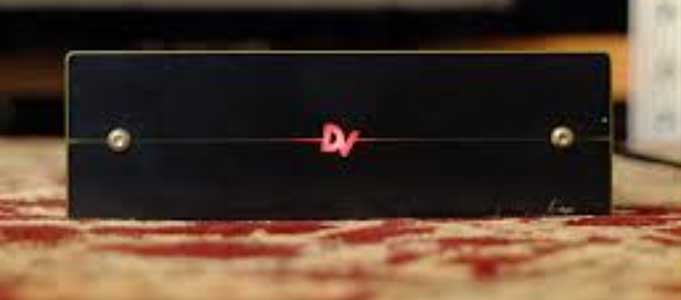
Longtime audiophiles will recognise the Dynavector name as a Japanese producer of high quality phono cartridges featuring exotic jewel cantilevers and the amazing looking 500 series tonearms.
In recent years Dynavector have branched out with a range of well received pre and power amplifiers designed by Australian Jonathon Davies in conjunction with longtime New Zealand Dynavector distributor/audio personality/raconteur, Frank Denson of Denco Audio. Together they form the basis of Dynavector Australia/New Zealand.
Good things in small packages?
The DV P-75 is a simple metal box adorned with a dark acrylic faceplate featuring an illuminated Dynavector DV logo. The back features a matching acrylic plate with cut-outs for the mains input socket, a hard-to-use mini earthing post and two sets of horizontally mounted RCA jacks for output and input. These are securely mounted to the chassis (hooray – absolutely no wobbles when plugging/unplugging cables), well spaced horizontally but a little cramped vertically so avoid any cables with large plug barrels.
Inner beauty
In true “never judge a book by it’s cover” fashion the little Dynavector eschews fancy aesthetics and packaging to concentrate on what really matters: the internal components, good design and execution.
In this price range most phono stages either use an off-the-shelf wallwart transformer for power supply or use expensive (and often problematic) on-board power supplies. The Dynavector breaks from tradition by implementing a unique high speed switched supply. Power is supplied by a stock 12V AC-DC adaptor.
Once inside a sophisticated 250kHz switched supply takes over, converting and regulating the raw DC as required. Dynavector claims this split supply is so effective that the quality of the wallwart has no bearing on the P75’s sound quality.
Catering to both MM and MC cartridges, adjustments are made by opening the unit up and manipulating tiny little jumpers. If you don’t have steady hands and sharp eyes, this aspect of setup is best left to your dealer.
High output/moving magnet cartridge users get 40dB gain with 47k Ohm loading, but no capacitance adjustment is available.
The low output/moving coil user is offered 60 or 63dB of gain, suitable for cartridges of 0.2mV or 0.15mV output with loading options of 30, 100 or 470 ohms. Those who like to run MCs at 47k Ohms are out of luck.
A bonus for those with suitable low impedance cartridges is the Dynavector “Phono Enhancer” mode, a circuit innovation devised by the late Dr. Tominari, founder of Dynavector Japan. This dispenses with the usual input resistor and runs the P75 as a current amplifier. Result is the cartridge sees an effective short circuit, supposedly the ideal load. There are three further options for Low, Medium and High output impedance cartridges. In typical audiophile fashion, Dynavector do not specify what Low, Med or High impedance is so it’s a case of trial and error to get the right setting.
No enhancements necessary
First listen was to the P75 in standard MC mode with 60dB gain and 100 ohms loading, using a Shelter 501 cartridge on a Well Tempered turntable. From a black silence the overriding impression was of music being reproduced with great clarity and detail. Better than average transparency allowed a clear look into the broad Panavision soundstaging with life sized images in sharp focus. Tonally nothing was missing or exaggerated; the smooth, extended highs, clean midrange and well timed bass all flowing coherently with good dynamics. Music sounded natural and unfatiguing.
Dr. T calling
After resetting the jumpers the Phono Enhancer was all ready to go. My Shelter 501 has an internal impedance of 12 Ohms so the Medium setting was tried first. Transparency improved, at the cost of tonal cooling, loss of bass extension and dynamic impact, along with reduction in dimensionality.
Next was the High setting. This was a large step backwards, it sounded very much like input overload with exaggerated sibilance and mistracking-like distortion.
Finally the Low setting. Most of the bass and dimensionality had returned but tonally something was amiss. My Shelter now sounded more like a Dynavector cartridge than a Shelter.
Without a suitable cartridge (a Dynavector MC perhaps?), this was a far from definitive impression of the Phono Enhancer. Overseas listeners have found the circuit is very cartridge dependent. Get the match right and possible musical bliss, get it wrong and you will soon be opening up the box and fiddling around with those teensy weensy jumpers again.
With the Shelter there was a clear preference for the standard MC mode.
A new benchmark
So how does the Dynavector stack up against fellow Kiwis, the Perreaux SXV1 and reigning New Zealand champ, the Plinius Jarrah?
The Perreaux exceeds in user friendliness but is easily out-performed by the Dynavector/Plinius duo. The Jarrah is powerful, controlled and musical with a slightly dark balance, weighed towards the lower end of the spectrum. The P-75 has greater transparency with a lighter than life, slightly drier balance coupled to greater detail and a slight loss in dimensionality and tonal bloom. One the romantic, the other the intellectual. I would be happy with either but with the Jarrah now at $880, the $699 P-75 noses ahead to take the top spot as the best value New Zealand made phono stage.
YG ACOUSTICS’ NEW ‘ENTRY LEVEL’ The period following the departure of founder and chief engineer, Yoav Geva, has seen the new ownership of YG Acoustics – the Colorado-based high-end loudspeaker brand – focus on developing its most accessible range to date. The five-strong Peaks series comprises two standmounts and three floorstanders, ranging in price from £9900 for the two-way Cairn to £30,000 for the flagship three-way Summit. All models use the company’s custom ‘ForgeCore’ tweeter with computer-optimised, CNC-cut magnet system, joined by all-alloy ‘BilletCore’ drivers in sizes from 150mm to 260mm depending on the speaker. The proprietary crossovers are hand-built using ‘the highest quality components’ while YG Acoustics’ sealed cabinets are constructed from pressed, 30mm-thick ‘resin fibre’ and feature machined aluminium baffles, plus bracing and acoustic absorbers to tackle internal resonances. Veneer…
Hi Fi News
Since its launch in June 1956 – two years before the commercial realisation of stereo – Hi-Fi News & Record Review has been delivering insightful reviews of the key products and technologies that lie behind our shared hobby. the passion of listening to music on the very best equipment available to the enthusiast. Every issue, Hi-Fi News delivers uniquely in-depth reviews of high-end audio equipment, including the best in vinyl replay and iconic vintage gear from the early days of audio. It is essential reading for all music enthusiasts.
in this issue
MAR/22
We didn’t set out to create an £800k system this month – it just ‘grew’ as our cover star project took shape. Let’s rewind a few months to when Dan D’Agostino, the man who pioneered high-end amplification with Krell back in the early ’80s (and continues in much the same vein with D’Agostino Master Audio Systems today), called me out of the blue. ‘Would Hi-Fi News like the first sample of our long-anticipated three-box Relentless preamp?’, he asked, already knowing the answer before I had taken a breath. After all, Hi-Fi News had celebrated the launch of his first own-brand power amp – the Momentum – with a cover splash some ten years ago [HFN Jul ’11] and is still the only hi-fi resource to have independently tested the flagship Relentless…
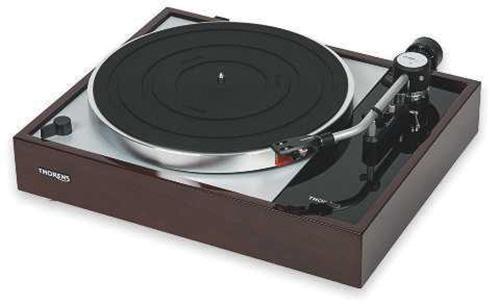
Twin Peaks
YG ACOUSTICS’ NEW ‘ENTRY LEVEL’ The period following the departure of founder and chief engineer, Yoav Geva, has seen the new ownership of YG Acoustics – the Colorado-based high-end loudspeaker brand – focus on developing its most accessible range to date. The five-strong Peaks series comprises two standmounts and three floorstanders, ranging in price from £9900 for the two-way Cairn to £30,000 for the flagship three-way Summit. All models use the company’s custom ‘ForgeCore’ tweeter with computer-optimised, CNC-cut magnet system, joined by all-alloy ‘BilletCore’ drivers in sizes from 150mm to 260mm depending on the speaker. The proprietary crossovers are hand-built using ‘the highest quality components’ while YG Acoustics’ sealed cabinets are constructed from pressed, 30mm-thick ‘resin fibre’ and feature machined aluminium baffles, plus bracing and acoustic absorbers to tackle internal resonances. Veneer…
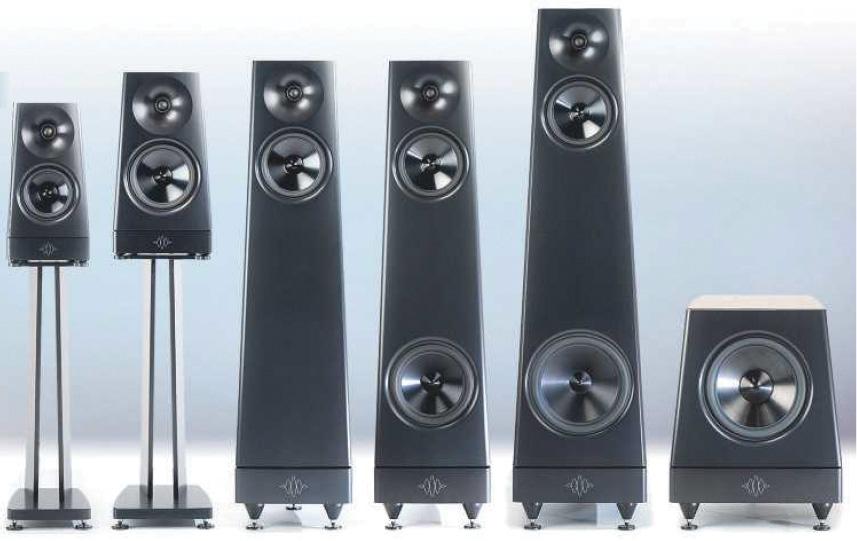
More Masters
NAD’S NEW EIGENTAKT CLASS D POWER AMP Having previously debuted Purifi’s Eigentakt technology in its premium M33 streaming amplifier [HFN Aug ’20] and C 298 power amp [HFN Oct ’21], NAD has brought Bruno Putzey’s ‘self-clocking’ Class D modules to another power-only model. The £2999 M23 replaces the NCore-based M22 [HFN Apr ’15], claiming a 2x200W/8ohm output, with peaks of 260W, and a 700W bridged mono output. Offering balanced XLR and single-ended connections, the amp features the brand’s usual Masters styling and utilises an all-alloy chassis with ‘iso-point’ feet. A three-step gain adjustment, and 12V trigger input, are provided on the rear panel. Lenbrook Inc, Ontario, Canada, 01732 459555; http://nadelectronics.com…
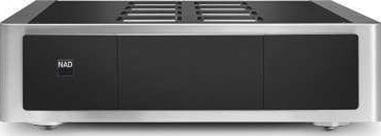
HI-FI NEWS' NUGGETS
IN MEMORIAM New Year’s Eve 2021 saw the passing of Max Townshend, the entrepreneurial powerhouse behind Townshend Audio, launched in 1975. Max, born and educated in Australia, moved to the UK in 1978 where he made his initial, and lasting, impact with the Rock turntable. This massive deck featured an oil-filled front-end trough that successfully damped arm/cartridge resonances. The trough was developed in collaboration with Professor Jack Dinsdale (Cranfield University), while the Rock deck itself steadily evolved over the decades into a more compact solution [HFN Apr ’10]. Latterly, Max had focused his attention on developing vibration isolation platforms, and the novel ‘Seismic Load Cell’, alongside cryogenically-treated cables [HFN Oct ’14]. These copper conductors were also employed in his passive, autotransformer volume control/preamplifiers. The Townshend brand remains in family hands. www.townshendaudio.com…
Mojo to go… again
SEVEN YEARS ON – CHORD’S MOJO NOW MK2 Chord Electronics has announced a successor to its Mojo DAC [HFN Jan ’16]. Named, as you might expect, the Mojo 2, this new £449 portable features a 40,960-tap iteration of designer Robert Watt’s WTA filter combined with a 4e Pulse Array DAC. The 104-bit ‘UHD DSP’ also offers an 18-step tone control adjustment across low-bass, mid-bass, low treble and high treble, plus a four-setting crossfeed function. Other updates include a new USB-C data input alongside the microUSB, coax and optical connections; faster FPGA-governed battery charging; and a menu system accessed by a fourth control ‘sphere’. The bead-blasted aluminium casework is also improved. Chord Electronics Ltd, 01622 721444; www.chordelectronics.co.uk…
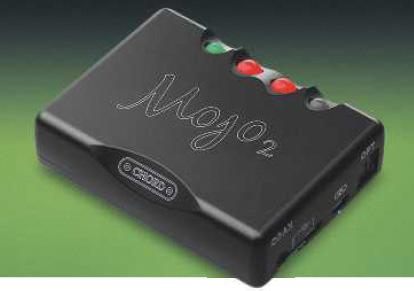
Concept trickles down
Q ACOUSTICS’ ENTRY-LEVEL CONCEPT 50 FLOORSTANDER The latest addition to Q Acoustics’ flagship Concept series of loudspeakers, the £1999 Concept 50 floorstander joins the long-running lineup as a more affordable alternative to the pre-existing Concept 500 tower [HFN Jul ’17]. A two-way model, it features new tweeter and bass/mid units – the former a hermetically sealed 25mm dome design, the latter 125mm coated paper cone drivers – plus a revised crossover network that now resides in the speaker’s triple-layer ‘sprung’ baseplate. The Concept 50 employs internal Helmholtz Pressure Equaliser (HPE) tubes to help mitigate cabinet resonances, alongside the brand’s Point-2-Point (P2P) internal bracing architecture. Finish options to the speaker’s ‘GelCore’ cabinet are black, silver or white lacquer, all with the same 3mm-thick aluminium faceplate. Also launched is the £899 Concept 30 standmount,…